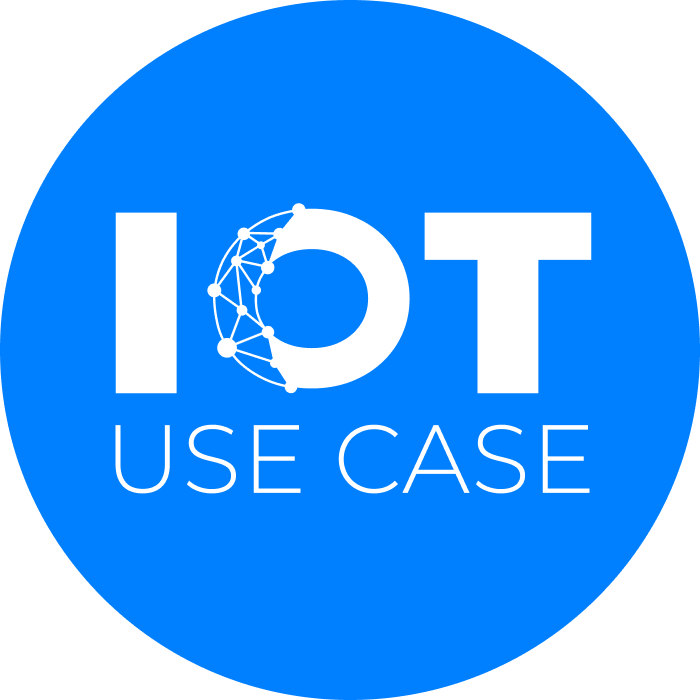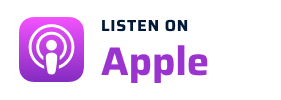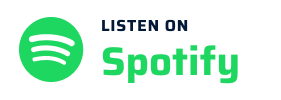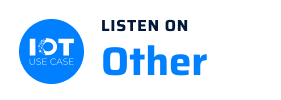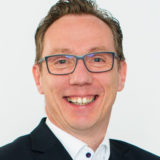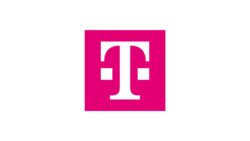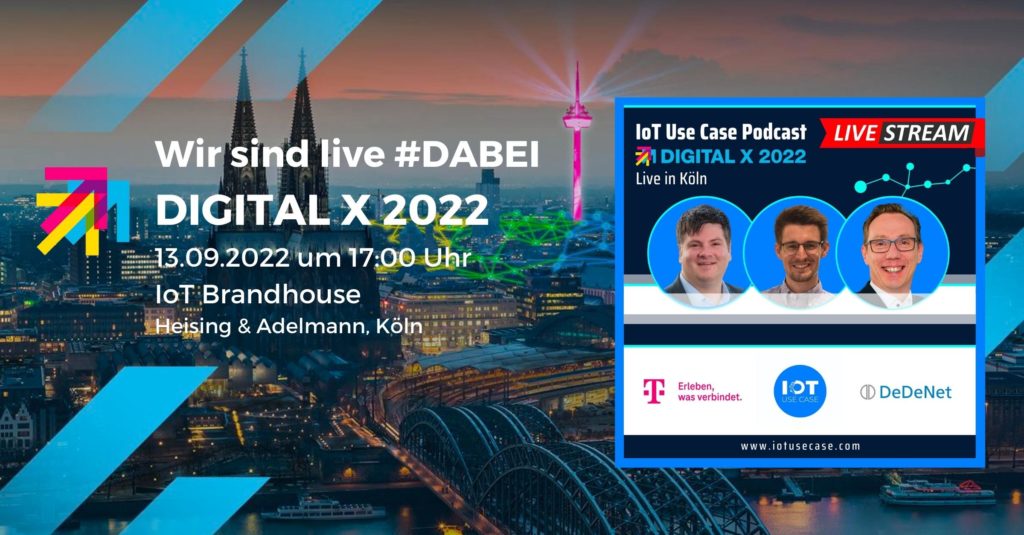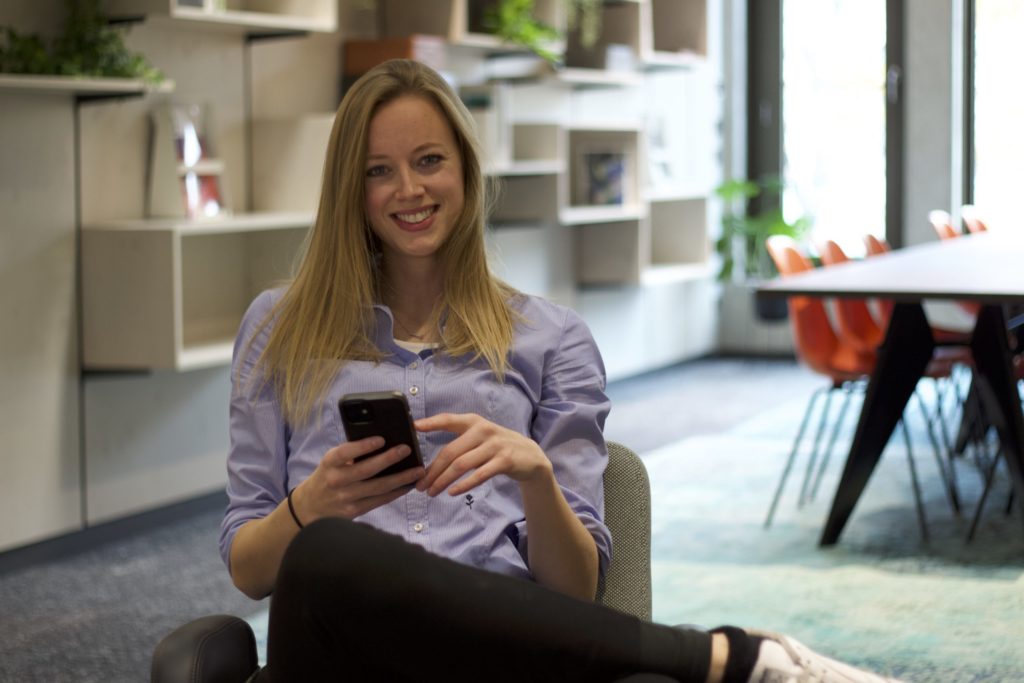“Digitization projects are created through dialog. You have to talk to the employees. It’s about having fun and enjoying the implementation. We can only be good if we understand the customer!” (Martin Craul, Sales Manager DeDeNet)
Episode 76 at a glance (and click):
- [06:45] Challenges, potentials and status quo – This is what the use case looks like in practice
- [10:50] Solutions, offerings and services – A look at the technologies used
- [25:48] Results, Business Models and Best Practices – How Success is Measured
Podcast episode summary
Picking up dirty laundry and textiles, bringing clean ones back – cleaning is the core business of the traditional Bardusch company. For more than one hundred and fifty years, the company has been dealing with protective, professional and special clothing or with textiles for hospitals or laboratories. However, cleaning alone is not enough: the laundry must then arrive back at the right place, exactly when it is needed. This is a constant challenge for the textile company, which demands a lot from their employees. To counter this, Bardusch has enlisted the support of the company DeDeNet.
DeDeNet is a long-standing partner of Deutsche Telekom and supports companies in the digitization of business processes. Specifically, it is about paperless, digital working to optimize operational workflows, with DeDeNet offering industry-independent, mobile software solutions for customers with mobile employees. Together with Deutsche Telekom IoT, they have developed a solution for Bardusch that allows tours to be planned and implemented smartly. The processes that need to be optimized are extremely small-scale, and a lot needs to be taken into account. In this episode, Martin Craul and Andreas Tanzer (Expert Sales IoT, Deutsche Telekom IoT) talk about the challenges of this “micromobility” and which technologies they have used to solve them.
Some results mentioned in the podcast: The number of empty runs has dropped dramatically, vehicles are more available, fuel consumption has been reduced, orders are processed faster and with fewer errors, and most importantly: Bardusch employees can appear competent in front of their customers and give them the best possible advice with digital services.
This episode’s podcast host this time is IoT use case co-founder Fabian Mattheis.
Podcast interview
I welcome Martin and Andreas! Nice that you followed us on stage and that you can tell us a little bit about your project.
Andreas
You’re welcome, thank you for the invitation. First of all, welcome to the IoT Brandhouse. This year actually with an own brandhouse, I hope everyone likes it. Today we have the wonderful task to present you a use case of ours, which we implemented with our partner DeDeNet. It is also nice to show: How can you optimize processes, especially with customers. We have already implemented some use cases, Bardusch is one of them. Whom we may also welcome here with us, is the company LichtWART with an intelligent light management, really controlling light intelligently and above all in an energy saving way.
Martin
Also from me a wonderful good afternoon! I welcome you all very much. My name is Martin Craul. I’m in charge of sales at DeDeNet and I’m super grateful that we’re on stage together here.
Andreas, you brought us Martin today. How did you meet each other back then? It is always interesting to learn about the background of the project.
Andreas
I can still remember relatively well, those were the predecessors of the Digital X. At that time, it was called IT Roadshow. I was still in account management when a colleague of mine introduced Martin. Since then, we have known each other and, at least in the field of IoT, we love each other as partners.
Martin
When we talk about partnership: business is done between people. We see here how we sit together and exchange, have fun and joy, we have missed that a bit in the last almost 3 years. For us as a solution partner of Telekom, we are of course very pleased to be able to stand on stage not only with you, but also with Telekom and simply outline a customer example of the benefits and added value.
After all, today we want to talk about the topic of route optimization and fleet management. Martin, tell us and the listeners about what’s happening in the market? Why is this a relevant issue?
Martin
So basically, if you have a fleet today, if you have a mobile workforce, the bottom line for your business model and your business purpose is to get the right employee to the right place at the right time. And to do exactly that, we support as a software partner, so that exactly this information is in a central place, so that I know in the end who is doing something tomorrow or who has done something, for accounting purposes. And of course it’s important that I get an overview of the fleet: What do I have there? What do I have for employees? What vehicles do I have, fleet? And that’s exactly what we bring, transparency to Deutsche Telekom’s cloud. We work very closely together, with Deutsche Telekom as a strong magenta partner and us as a flexible service provider, which is how we have been operating successfully together for over 20 years.
And the issue just gets more relevant with each passing month. It’s exciting to follow the development. Today, we are looking at this specific use case in the area of logistics processes and truck fleet management. What customers can you tell us about, and what do the processes look like on site?
Martin
Today we talk specifically about the company Bardusch. Bardusch is a textile company, cleans textiles, is a very large Telekom customer, which has the task of collecting dirty laundry from clinics or so-called rental laundry and transporting clean laundry to them. The task is very small-scale, it’s called micromobility, knowing who does what, when, where. The worst thing, which everyone can imagine, is when we are lying in a hospital bed and suddenly there is no longer a bedspread, that is of course the worst case. Or one company lacks work clothes, which is of course bad. That’s where we come in, very small-scale, and support the Bardusch company.
Challenges, potentials and status quo - This is what the use case looks like in practice [6:45]
Absolutely relevant topic. We’ve now learned a bit about what happens on a day-to-day basis, so maybe we’ll go over it again very briefly before we get to the solution: What is the specific challenge for the customer? What do they face on a daily basis? Where have you identified the potential with IoT?
Martin
The great challenge that the customer simply has. The customer is not actually a logistics company, but a laundry, which has the task of washing clothes. However, Bardusch had to set up its own logistics because it is so special with hygiene guidelines and a whole host of framework conditions and things that have to be fulfilled. The important thing for them is that the washing machines rotate and wash. Thus, of course, they want to know where do I get what laundry now, so that I have enough capacity to wash, but also not too much. And thus had to bring the logistics process in-house. They couldn’t do that through a third-party service provider because they were too custom. This is exactly what we accompanied. Knowing that, of course, on the one hand, in the future consideration, the subject of route planning and route optimization. The right employee in the right place at the right time. And also such topics as: Where is he right now? Where did he drive? Where was he? This information to be able to provide statements to customers. These are all issues where we provide support with our IoT expertise. This means that we have installed black boxes in the vehicles that provide us with the information from the vehicles. Positions, but also other vehicle-specific information. The black box comes from Deutsche Telekom, and the SIM card that transmits data in it comes from Deutsche Telekom. You can see this matchmaking again, the close cooperation, and in the end we top it off with our software solution competence and of course also the project and process competence. Let me outline one of our customers: “I only want to touch data once. I don’t want to type something x times, enter something there, that’s oldschool.”
Andreas
What I may add, which is still immensely important in the current discussion: transport, washing. In a laundry, which of course has a very high water consumption, the entire transport route must of course also be optimized, no empty runs, dirty laundry must not come into contact with clean laundry because of cross-contamination, which is extremely important in hospitals. The washing machines should be properly utilized to the environmental protection character that we live as Telekom, as IoT, under the hashtag #GreenIoT #GreenMagenta. We not only want to support in IoT solutions, but also become “greener” as a company. I have two little kids of my own. The nature I experienced as a child, I would also like that they can later show that to their children, sometime my grandchildren.
Martin
That’s the beauty today, that IoT and sustainability are not mutually exclusive, quite the opposite. The issue of sustainability, which was perhaps the driver last year, CO2 reduction, microplastics, tire wear and the like. Today it’s about energy costs. That’s where it’s important that I have the right costs in the right place, and not unnecessarily. This is the washing machine, the water, for heating, of course, the vehicle that goes somewhere and picks up something.
Exactly, so the topic of sustainability is actually the focus topic of all industries. We notice this every day in our discussions with many partners and in the use cases.
Solutions, offerings and services - A look at the technologies used [10:50]
If we take another look back in the direction of the project with Telekom and look at the beginning. Can you maybe tell us a bit about the technological requirements of the customer and of you?
Martin
With pleasure. The whole topic has evolved, the customer has actually started with the topic of tracking, location. Where is my car? Which way did he drive? But also to read data from the car. The topic of digital tachographs is a very important point. And then the topic evolves more and more. The task was to enable the drivers who work for Bardusch to provide the best possible service. The big problem we have these days is the colleague knows, but I don’t know. The bottom line is that we used the software and developed something with Telekom that enables the driver to do his job in the best possible way. That he can stand in front of the customer with a proud chest and say “I am an employee of the Bardusch company. I have the information I need.” and don’t start asking “where is my closet, where do I have to go, where do I find the dirty laundry?”. At Bardusch, we extract this information from the SAP system, make the data mobile with the help of Deutsche Telekom and, of course, our software expertise, so that the driver is able to have this information at his fingertips.
That means you get all the data together, process it, and then have it collected at one point. A short critical question: Why Telekom? Because there are many providers on the market.
Martin
You can see it in this event, it really is at its best. It’s Europe’s biggest digitisation event, where we are invited here, and everyone is part of this community. This is something that Telekom has already done uniquely. In addition, Telekom has expertise in the area for each customer on different topics through its area sales. When the customer requirements are very specific, talks are held and Telekom does the matchmaking. Does the partner fit the customer’s problem and where can support be provided? Providing, data security, all topics for Telekom, and then to go beyond that into individual customer services or into the processes, you need appropriate partners in the partner network, and we are proud to be part of that.
Andreas
Normally, in the past, it has always been the case that every truck driver has his truck. Finally, with the route optimization, the truck was assigned that it is optimally utilized for the route. For the drivers, this was an initial adjustment. This connection that the account management, Magenta had to Bardusch to be able to create the trust. I also approach the drivers and take them by the hand. You have a change in your workplace, but in return I optimize your day. This may also mean that you finish work an hour earlier, because the tour has been optimized and you no longer have to drive there. Where we are strong, from birth, is connectivity. Through a piece of plastic, we have the opportunity these days to offer an IoT tariff where I, as a customer, no longer have to worry about: Can I use this in the USA or Brazil, Austria or Holland? Of course, the partnership with you, the competencies that we don’t have, with Tracking Device and the platform behind it, having a partner like DeDeNet that we can approach, that brings their competencies to the table.
That’s how you guys complemented each other for the project, if you can summarize it that way. Now you have set up this digital truck fleet management together. I would now like to understand in more detail in the next step how the whole step-by-step process works, from data acquisition, data processing and finally data analysis. But maybe a step back, Martin, in your direction, who specifically implemented what in the project and contributed what components?
Martin
Yes, very much so. As I said, we started with tracking, tracking device from Deutsche Telekom, providing from Deutsche Telekom. The drivers needed a mobile device to work with, which had to be robust, that it would function appropriately in industrial use, that came from Telekom. This also includes the corresponding contract. What we ended up adding from the origin, from the tracking component, then the mobile working component. Today, we do the entire service for the customer, everything that has to do with delivery, completely as Telekom and DeDeNet together. That is, we do life-cycle management, which means we take care of the driver if they have a problem with the end device, we get the software on the devices, we get the right device to the right employee. Very small-scale processes, where we can of course act very flexibly as a medium-sized company with just under 50 employees. We can then add resources accordingly and act differently than a corporation. That’s what makes it so special for the customer, that he really does get exactly what he wants, also in terms of price, or where he gets the benefit.
Andreas, maybe put the question in your direction. Can you tell us from your perspective, the data acquisition, hardware issue, how does it all work there.
Andreas
Of course, a truck like this has many sensors of its own, as you would expect from a car. I feel like the car talks to me more than I talk to the car. You have to imagine there’s a piece of plastic inside, a black box that records all kinds of data. You could, of course, tap it off the truck, but that’s always a bit tricky, depending on what the manufacturer allows. In this case, we always like to work with the black box, an external device, which on the one hand picks up the coordinates quite classically via GPS and buffers them temporarily. However, GPS can also be used to draw further data such as speeds, determine driving behavior via a gyro sensor, i.e. strong braking and strong acceleration. The box has our SIM card in it. This data is sent as raw material via a secure connection to DeDeNet to a cloud solution and processed at DeDeNet. This starts simple, e.g. with a Google Maps map, where I can display the collected GPS data, but from there I can also process and evaluate data again. If someone brakes hard or accelerates hard, you can ask the driver “what was going on?”. But the whole thing also helps me as a company to optimize routes. Google Maps is good, but if a traffic jam is not displayed and the vehicle drives every morning and is always stuck in traffic, you can recalculate the route and drive more energy efficient.
Martin
What I would like to add, that sounds clear to us drivers, traffic jam is the relevant thing when we want to get from A to B. At Bardusch it is more complicated, we are talking about capacities, skills, dirty laundry may not be transported with clean. These are the little things that we as a solution partner with our AI, which we have developed to of course be customer-specific, because we have different customers with and thanks to Telekom, we were able to offer Bardusch a solution out of the kit. What are your frame parameters? Dirty clean laundry and weights. Roll container? How big are they? How many fit in one car? Capacities. These are parameters that we have taken into account to enable tour optimization on them. The topic of fun and joy in the implementation with customers, we can only be so good if we understand the customer and then help with our software.
Andreas
The keyword that comes to mind is competencies that complement each other.
Actually, one should conclude with the sentence. However, I would like to know something more about scaling. Maybe, Andreas, you are welcome to start and you, Martin, add to it again. When I look at this use case now, who can basically benefit from it? How is the whole thing possible?
Martin
In general, you can always benefit from having people outside. If I’m in an industry and have a business where people are out on the street. Whether that’s truck drivers or the classic field service, where I can simply optimize the routes, the way of working, digitize life and no longer need a consultant’s portfolio. Then if anything is where something or someone is on the move, outside, you can optimize with the DeDeNet. Basically, it is interesting for every industry. Don’t think in industries, think in use cases, there is nothing too abstract.
Andreas
All customers are relevant and interesting where I have a future view, an area structure. I have to provide some service, some service, and I have to empower the employee. Delivering the right information to the right place at the right time. That’s the big challenge these days. We all know how the information pours in on us, where I have to select, what is relevant for me now. Our aspiration is to enable the employee to do the best possible job for the company. That he is not shrugging at the customer and does not know what the customer actually wants from him. That he can also advise the customer accordingly, not with a consultant’s folder, but with the digital devices a lot of possibilities arise. We have demonstrated this together with Telekom, we are the first and only telematics partner to have integrated a training model, an online training platform, into the mobile app together with Telekom for Bardusch. That they can train employees on hygiene, different hazard and safeguarding topics, especially in the onboarding process. If the customer gives the impulse and Telekom and we sit down together, then we find a joint solution. That’s the beauty of the collaboration, that you always get interesting use cases from the customer, because Telekom simply has the customer access, I can only recommend everyone to approach their Telekom partner and ask, because they know someone. That’s a huge advantage, the customer also has to understand what Telekom offers him. That’s where we are happy and proud to be a Telekom partner, because the success we have together is of course also the foundation. That customers are willing to enter into talks with Deutsche Telekom is how we can then be successful.
Use cases are many, you said it, the focus away from the industry and towards the use case because that is logically applicable to many areas.
Results, Business Models and Best Practices - How Success is Measured [28:22]
Now we have already taken away a lot technically, perhaps we will bring the topic back to the economic consideration. Andreas, perhaps now also once started with you, in regard to the business case, what does that look like? Return on investment consideration, tell us about cost savings, revenue. What are your learnings there?
Andreas
In the end, you can never put it 100% or 08/15 over every use case. As a rule, all cases, all use cases where I make use of digitization is, of course, first and foremost an investment, as with everything in life. But what I save financially in the future or in terms of sustainability, I invest not only in my own company, but also in the future. Financially, all the use cases I’ve implemented at Telekom have ultimately always sent the signal, we’ve saved this and that in year x, and the most optimal thing I’ve ever experienced: “Yes Mr. Tanzer, difficult, difficult, this won’t pay off for us for 5 years.” After 3 years I call and they say “yes, reinvest is done.” Ultimately, though, you have to look at it in detail. Digitization doesn’t cost anything, digitization saves and brings me money.
Martin
I can only give two messages on this. Firstly, we are happy to make a bet with customers to achieve a return on investment within the first year. If that’s not the approach, it’s not a use case for us. It makes no sense to ride a dead horse, that is totally uninteresting for us, i. e. we want to offer the customer added value. A factor is always in the first year, that is achievable. We have customers who get it in the first month. What is an issue today, of course, is route optimization. These allow for a potential of up to 30%. This proof of concept, you can take an example scenario where you set up very precise (unv. 28:41) data with the algorithm to analyze added value, it’s actually totally simple for the customer, he already gets a result in the proof of concept and can then fine-tune it together with Telekom and us. The important thing is dialogue. Digitization projects are only created through dialog. You have to take the employees with you, we’re talking about the change process, that’s not so easy and we have to be in dialog with the service provider and then we also have to be empowered not just to invest and say “I’ll buy that now and do it”, but I also have to introduce it. That’s where the customers are all the time, they have to do the things they once decided to do.
Great success story. Andreas can you maybe share some experiences with us, what you have learned from this project? Maybe also pitfalls that you could identify.
Andreas
What I learned privately: Not all laundry is the same. I also learned that the more, the better is not true. Also interesting were the processes behind a laundry. What a process chain is behind it, what an effort it is. Executing that in the analog world was super fascinating. Looking back on how things can be different. To see, at the end of the day, what is the benefit, what is the success and that is a great feeling. When you come into an analog world, and at the end you see the digital world. If then a customer says “you really helped us and it works for us” and then the customers of our customers are also enthusiastic, that is the best thing that can happen.
Martin
Absolutely, there is almost nothing I can add. You learn something new with every customer and that’s actually the beauty of the job, you always meet new people and new challenges. What I learned is the terminology “Einfächern.” The task that the company Bardusch does as a service to the customers, put the things in the compartments so that the person who is to wear it takes it out of the right compartment. That’s super small-scale and a big challenge and to have the quality throughout. You have to imagine that if you have a large industrial complex and someone comes there for the first time, they have to be able to navigate it using our app as if they’ve always been there. Ultimately, that is the task at hand. That reduces fears among employees, you have to take them with you, then you also have the benefit on the employee side, that they say accordingly “we’ll go along with it, we have the benefit and the added value” and so in the end everyone has to get into this way of looking at things. Of course, the business case has to be right, it must not simply be invested in whatever. I need to have all the process participants involved, that everyone gets the benefit and then you achieve a successful project.
A very important point that one has the whole in view and then at the end perhaps evaluated once. Andreas, as we slowly think towards the end of our podcast, give us a glimpse of the future, what’s in store for us, what can we look forward to?
Andreas
Of course, we launched Global Connectivity this year in February, the first global IoT tariff. If we look into the future, where we are thinking about it and are already having discussions, how can the whole thing be mapped via satellites in the future. That we say we have 5G today, which is kind of there, and we as Telekom are already thinking about how to realize it via satellites. On the one hand, the most remote places where no base station is possible due to physical nature, but of course also, what can enable me further in terms of bandwidth. If we look in the direction of connectivity, where we are going and definitely the other idea that we say we are rethinking IoT very classically in the direction of use case. What you also do as IoT use case, where you come from. Of course, also the whole story with the level measurement, how can we just optimize things that help our world. What can I optimize and how to become “Green IoT” and “Green Magenta”.
As you said, that’s the core of this podcast, to focus on the real use cases and to see what’s really going on in the real world, and the DeDeNet-Telekom use case together with Bardusch is actually the perfect example.
Moderator
Many, many thanks. Are there any questions from the audience?
Andreas
Also wishes and suggestions!
Question: Martin, I have one question. After all, you and I made a movie with a menu delivery service. There was a driver who said what was happening to her, what had happened to as a result of your digitization. When you say 30%, what does that really mean? When you turn data into tour optimization.
Martin
First of all, this causes fears among the people themselves. The very specific driver who was just addressed had fears about working with a new software, with a new tool, because she didn’t know what she was getting into. But realized within a day the benefits and added value. She simply stands there competently in front of her customer, in front of her contact person. And that’s what we all want as human beings, we want to show competence, we want to be put in a position and if we don’t have the information then we can skirt around it a lot, but the bottom line is of course that’s the task of all of our potential customers. Then you also achieve super fast enthusiasm with such a person and that is what we want to achieve. Just do it.
Question: Fabian, a question about “Just do it”. To what extent does Deutsche Telekom already use existing infrastructures for IoT? I’m talking about fiber optics, network distributors and multifunction housing. There are already one or two use cases where sensors are installed and the data is actively used.
I think the question was aimed at your.
Martin
Sensor technology of course, so really burglary protection. I once went out with a service technician to find out, “What do they actually do all day?”. I found it fascinating when I was told that these things are regularly broken open, because the cards or plug-in things that are in them can probably bring a lot of money on the black market. But also stories like: has water penetrated, for example, with a moisture sensor. In the new multifunctional housing, temperature is quite important. Whether there is leakage, that there was negative pressure. Today, of course, with fiber optics, sensor technology is installed in exactly the same way, and we are also working here with a certain artificial intelligence to prevent possible damage and failures, to plan mobile or fixed networks in advance. At the Oktoberfest, Big Data, AI, will be used for analyses: how high could the data consumption be in the following year, the number of telephone calls, accordingly more masts to be planned, up to small base stations in the beer tents. Implementing 5G throughout Oktoberfest for the first time this year so everyone has reception. Internally, tours are optimized so that work is optimized. For those who are interested in details: we have several channels on YouTube, including one with the “Sendung mit der Maus” principle.
Moderator
Thank you Andreas, last question?
Question: Holger Sacher from ecovium. Martin, I know you now. The tour optimization, tour planning is new to me. Accordingly, are there any industries in particular where you would place you high performers?
Martin
Actually no. The colleagues have developed a logic where customer-specific skills, capacities and framework conditions can be defined. We do not need to permanently redevelop the algorithm. In the case of passenger transport, the aim is to keep the time passengers spend in the vehicle as short as possible, otherwise they could also travel by public transport. That’s exactly where our algorithm came in. On the subject of hygiene, as in the Bardusch example, with dirty and clean laundry, in catering, where the subject of the cold chain must be taken into account. Whenever it gets more special, don’t scan with packages like Amazon delivery service. The important thing is to help the customer in higher levels directly with the module construction kit.
Many thanks at this point to both of you, Martin, Andreas. Thank you for giving us an insight here, for the exciting impressions. With that, I say thank you to the audience for the input we were able to give you and maybe you took away a thing or two. Thank you very much.
